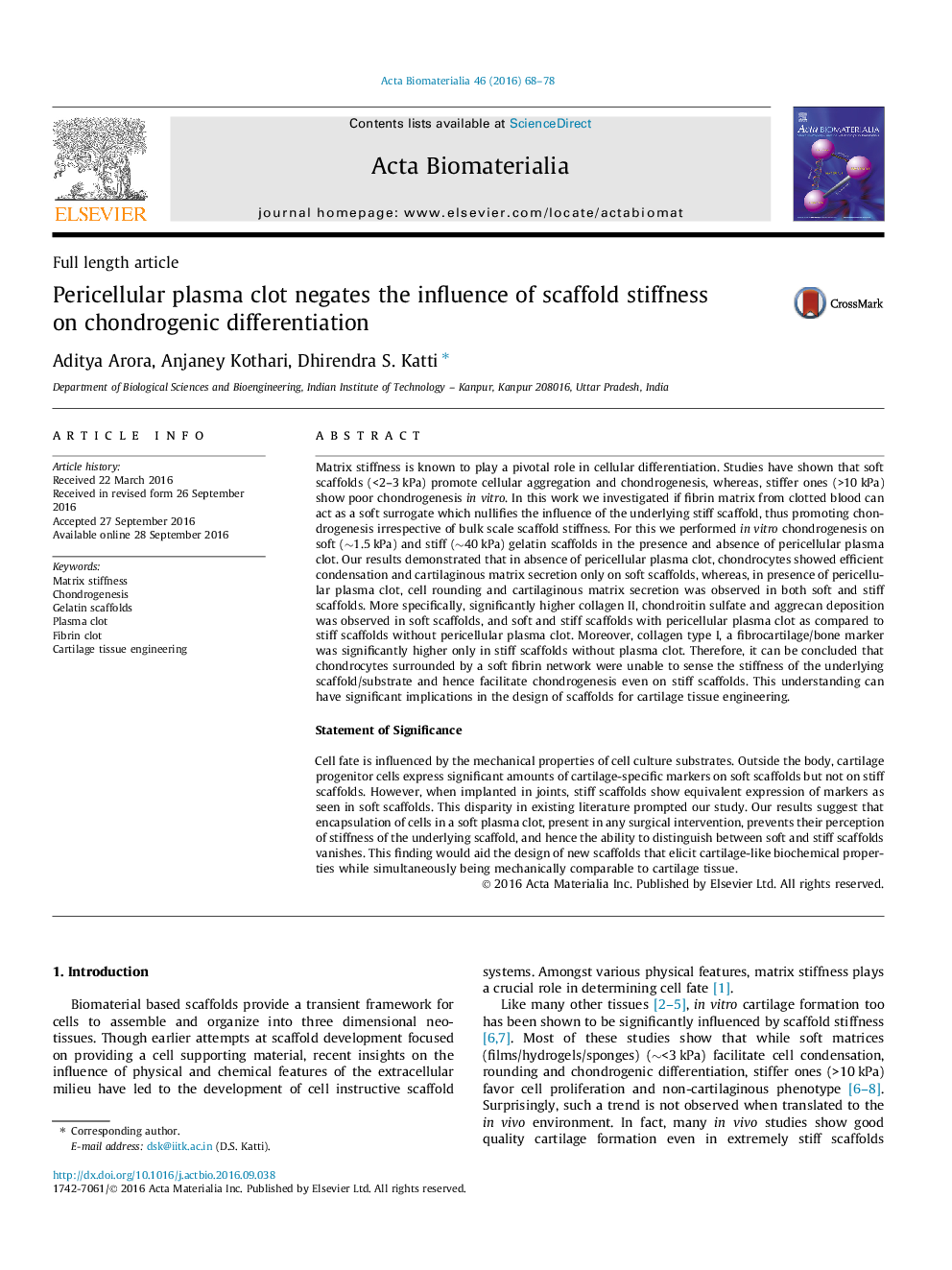| کد مقاله | کد نشریه | سال انتشار | مقاله انگلیسی | نسخه تمام متن |
|---|---|---|---|---|
| 6450136 | 1415940 | 2016 | 11 صفحه PDF | دانلود رایگان |
Matrix stiffness is known to play a pivotal role in cellular differentiation. Studies have shown that soft scaffolds (<2-3Â kPa) promote cellular aggregation and chondrogenesis, whereas, stiffer ones (>10Â kPa) show poor chondrogenesis in vitro. In this work we investigated if fibrin matrix from clotted blood can act as a soft surrogate which nullifies the influence of the underlying stiff scaffold, thus promoting chondrogenesis irrespective of bulk scale scaffold stiffness. For this we performed in vitro chondrogenesis on soft (â¼1.5Â kPa) and stiff (â¼40Â kPa) gelatin scaffolds in the presence and absence of pericellular plasma clot. Our results demonstrated that in absence of pericellular plasma clot, chondrocytes showed efficient condensation and cartilaginous matrix secretion only on soft scaffolds, whereas, in presence of pericellular plasma clot, cell rounding and cartilaginous matrix secretion was observed in both soft and stiff scaffolds. More specifically, significantly higher collagen II, chondroitin sulfate and aggrecan deposition was observed in soft scaffolds, and soft and stiff scaffolds with pericellular plasma clot as compared to stiff scaffolds without pericellular plasma clot. Moreover, collagen type I, a fibrocartilage/bone marker was significantly higher only in stiff scaffolds without plasma clot. Therefore, it can be concluded that chondrocytes surrounded by a soft fibrin network were unable to sense the stiffness of the underlying scaffold/substrate and hence facilitate chondrogenesis even on stiff scaffolds. This understanding can have significant implications in the design of scaffolds for cartilage tissue engineering.Statement of SignificanceCell fate is influenced by the mechanical properties of cell culture substrates. Outside the body, cartilage progenitor cells express significant amounts of cartilage-specific markers on soft scaffolds but not on stiff scaffolds. However, when implanted in joints, stiff scaffolds show equivalent expression of markers as seen in soft scaffolds. This disparity in existing literature prompted our study. Our results suggest that encapsulation of cells in a soft plasma clot, present in any surgical intervention, prevents their perception of stiffness of the underlying scaffold, and hence the ability to distinguish between soft and stiff scaffolds vanishes. This finding would aid the design of new scaffolds that elicit cartilage-like biochemical properties while simultaneously being mechanically comparable to cartilage tissue.
299
Journal: Acta Biomaterialia - Volume 46, December 2016, Pages 68-78
